Ant Identification & Prevention
Carpenter Ants (Camponotus pennsylvanicus)
In some areas of the country, carpenter ants cause more damage to structures than termites. They are difficult insects to control and can cause extensive damage to the wood members in your home. Carpenter ants do not actually eat the wood but excavate galleries within it to use as nesting sites.
Foraging activity can occur at any time of day but usually happens at night when there is less movement in the house. When foraging inside houses, carpenter ants are attracted to sweets, meat, grease and fat.
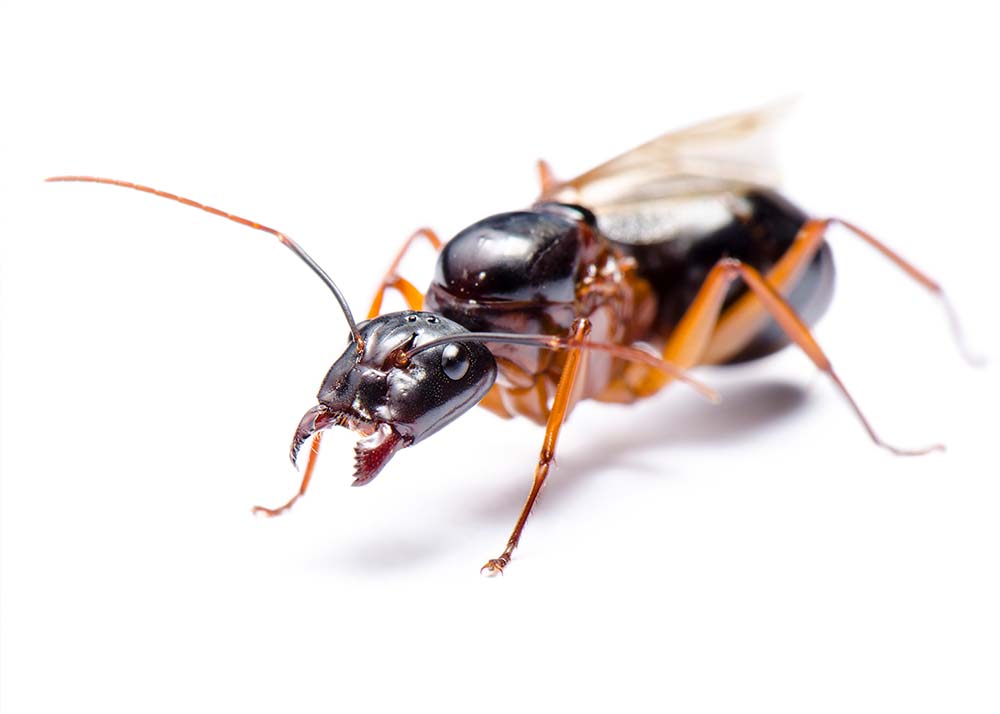
Carpenter Ant Colony Formation
A carpenter ant colony is usually formed by a queen who begins her nest in a piece of old buried wood or in a partially decayed tree or stump. In mature infestations, there may be as many as ten satellite colonies linked to the main colony by trails.
There is a frequent exchange of workers between these satellite colonies and the main nest. Colonies normally do not produce winged reproductive forms, until they are at least three to six years old with the emergence of swarmers (flying ants) typically occurring from May through July.
The most common way in which homes become infested is through the emigration of an existing colony. Houses located near wooded areas or brush-covered lots are good candidates for infestation.
Carpenter ant colonies are inclined to move when disturbed. Often, people first realize they have a carpenter ant problem when construction work is being performed in the house or when a nearby ant infested-tree is cut down.
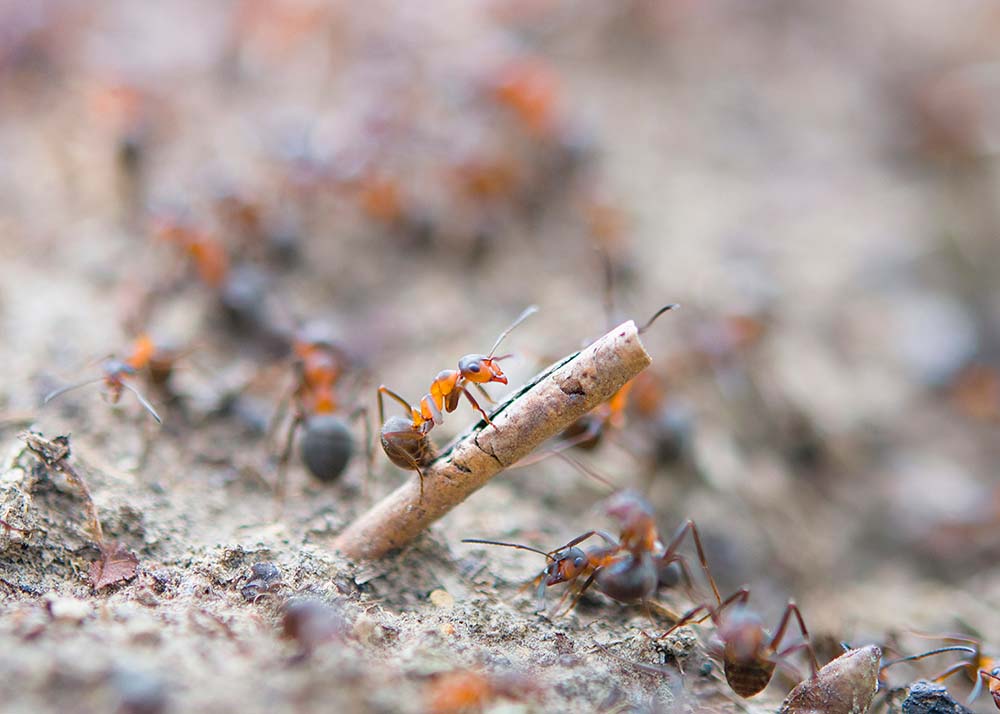
Common Signs of Carpenter Ant Infestation
- Frass (sawdust), which is made up of wood shavings, bits of soil, dead ants and parts of insects. This material is often piled up outside of nest openings and can be found in spider webs and window sills.
- Small “windows” or slit-like openings in the wood. These windows are actually “garbage chutes,” which carpenter ants make and use to dispose of sawdust.
- Clicking or rustling sounds inside your walls can sometimes be heard coming from carpenter ant nests. If you identify a potential nest site, try tapping against it with a screwdriver. You may hear a response — the clicking of alarmed ants.
- Wood damaged by carpenter ants contains galleries that are very clean and smooth.
Pavement Ants: (Tetramorium caespitum)
Also called “cookie ants”, “sugar ants” and “tiny, small ants” are dark brown to blackish in color and about 2.5–4 mm long. Like other ants species, there are the workers, reproducers, and a queen. Alates or drones, have wings and are twice as large as the workers.
The drone’s only job is to mate with the queen, and reproduction is at its highest in spring and summer but has been known to emerge any time of the year in heated structures.
It is not uncommon to see them swarming in late fall and into February even in colder climates. Tetramorium, like many other ants have nuptial flights where drones fly high up in the air and mate with new queens. The queen finds a suitable nesting location and digs a founding chamber.
As the eggs hatch and the ants develop they will spend that time, about two to three months, tending to the queen of their colony. They will continue helping in the colony until they are a month old.
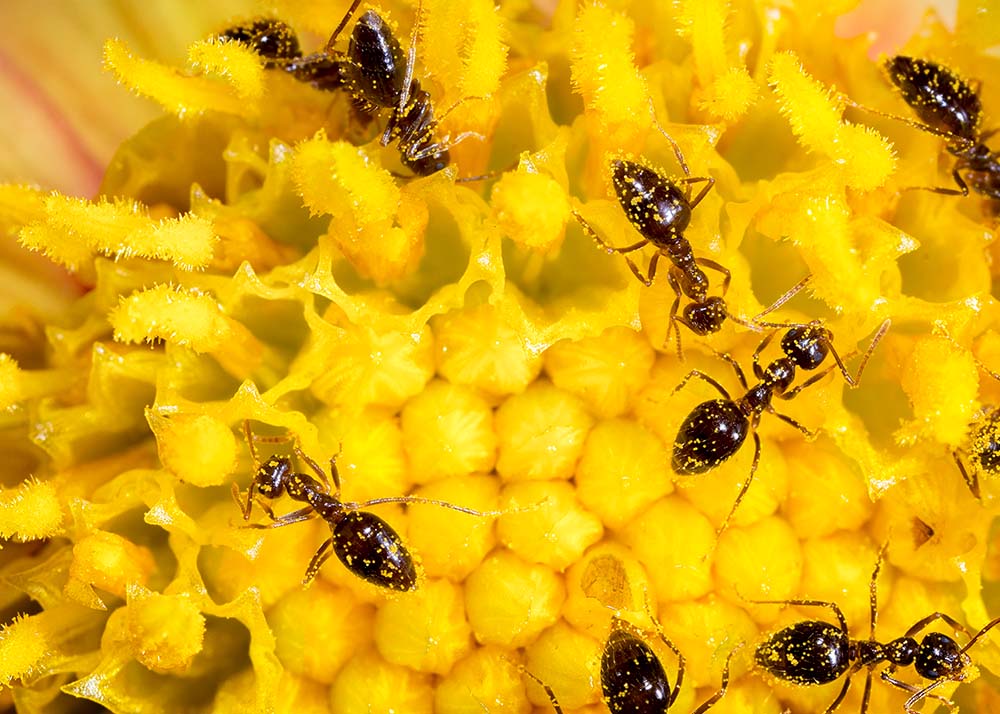
Where To Find Pavment Ants
Most colonies are located under sidewalks, building slabs, and large rocks. Ants enter buildings through cracks in foundation walls and interior slabs. It is common to see sand piles and small soil particles in structures near cracks in concrete slabs or at the top of foundation walls where the ants deposit debris from excavated nests. Similar piles are seen in the warmer months at the cracks in sidewalks.
What They Feed On
Pavement ants feed on a wide variety of food. Sweets, including sugar, nectar, fruits, and syrups are readily taken. Grease, dead insects, and small seeds also are collected and stored in the nest. Nearly any morsel of food that falls to the floor will be consumed. Older workers hunt and defend the colony. They will eat almost anything, including insects, seeds, honeydew, honey, bread, meats, nuts, ice cream and cheese.
Crazy Ants (Paratrechina longicornis)
Crazy ants are noted for their erratic movements. They appear to be lost and confused. Colonies tend to be small, with up to 2,000 workers and 8-40 queens. The presence of numerous interconnected colonies may result in larger infestations.
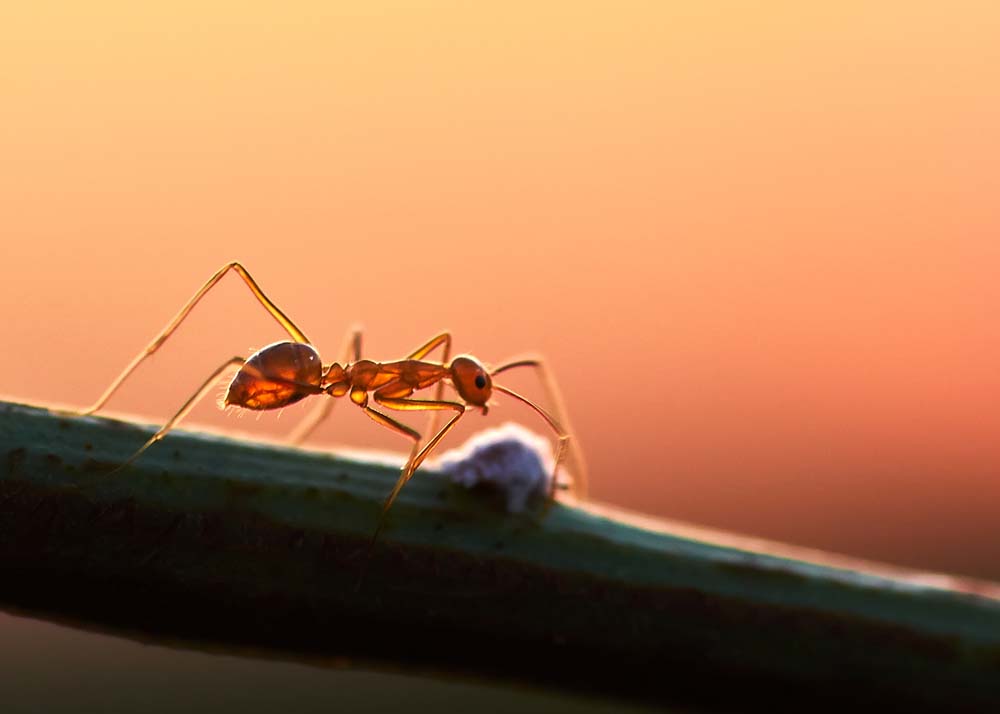
Colonies may spontaneously abandon one nest site and move to another. Inside, crazy ants usually nest under floors and in wall voids, frequently near hot-water pipes and heaters. Workers follow trails of up to 100 feet to forage for food.
Outside, nests are shallow and in soil under objects or in plant cavities, trees, trash, refuse, mulch and potted plants. Crazy ants enter homes in the fall or after rain when honeydew supplies are reduced.
What They Feed On
Crazy ants prefer insects and sweets, but will feed on any household food. Outside, their preferred diet includes insects, seeds, fruits and honeydew from aphids, mealybugs and scale insects.
Odorous House Ants (Tapinoma sessile)
Odorous house ants (also known as stink ants) live in colonies that may contain up to 100,000 ants with many queens. Super colonies may exist where food, water, and brood are exchanged between satellite locations.
Indoors, odorous house ants nest in wall voids, especially around hot-water pipes and heaters, and in crevices around sinks and cupboards. Outdoors, nests are often found in soil, usually under objects.
Odorous house ants are most likely to enter buildings when colonies become very large and natural food and water sources become scarce and when climate conditions are extreme (drought or flood).
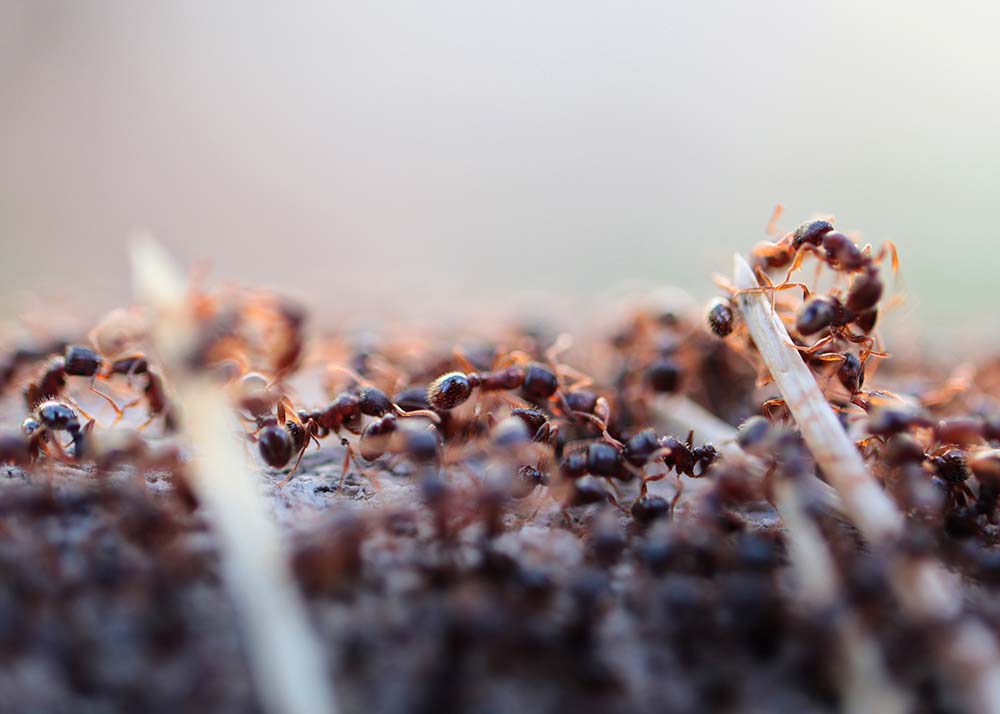
What They Feed On
When indoors, odorous house ants prefer sweets during most of the warm season, but will eat high-protein foods and greasy meats and cheese as dictated by colony requirements. Outdoors, they feed on honeydew, plant secretions and sometimes seeds and insects.
How To Prevent & Control Ants
Inject dust in voids
In infested interior walls or in the voids of outside ground-floor walls, drill and inject insecticide dust. Access wall voids via electrical outlets and plumbing installation holes.
Close entry points
A perimeter treatment will keep ants from entering buildings. Spot treat entry point (e.g., window and door frames & utility entries). For perimeter treatments, use a liquid in conjunction with a granule product.
Apply bait stations
Apply bait(s) along foraging trails, near suspected nest sites and in cracks and crevices around the perimeter. Bait in sufficient amounts to ensure adequate exposure of the active ingredient to the extended colony.
Exterminating Services Estimate
Bluesway Pest Control provides dependable and affordable ant control and exterminating services. We offer our home ant control for people in the Westchester area and beyond.
For more information, please contact us today. We will gladly answer any questions or concerns you may have regarding our exterminating services. We can also provide you with a free estimate for our services.
“Cannot recommend this company enough. We had a big pest problem and they offered the best solution. Great prices – friendly service – SAME DAY appointment. Even if you have a pest control provider, I would consider giving these guys a call to see how they compare.”
Dylan B.
Get Started with Bluesway Pest Control Today!
(914) 968-8404
We have a loyal client base in communities like Yonkers, Mount Vernon, New Rochelle, White Plains, Scarsdale, Dobbs Ferry, Eastchester, Port Chester, Rye, and all throughout Westchester, including Rockland County and parts of New York City.

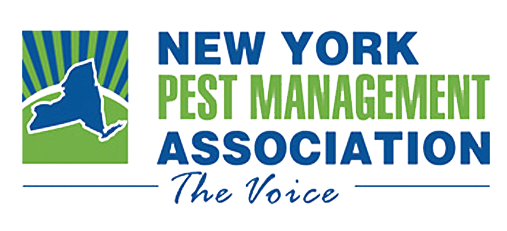





Bluesway Pest Control
320 Saw Mill River Road
Yonkers, NY 10701
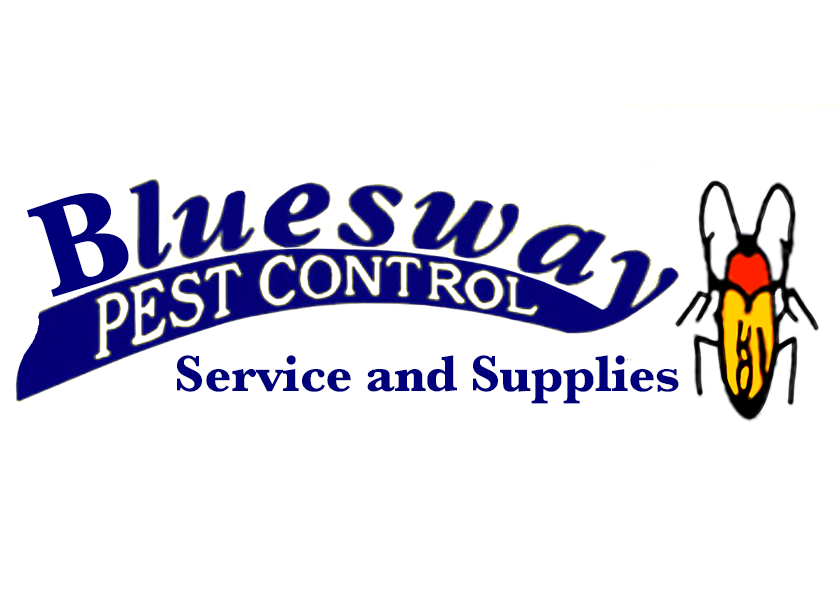
Copyright © 2022 Bluesway Pest Control – All Rights Reserved.
